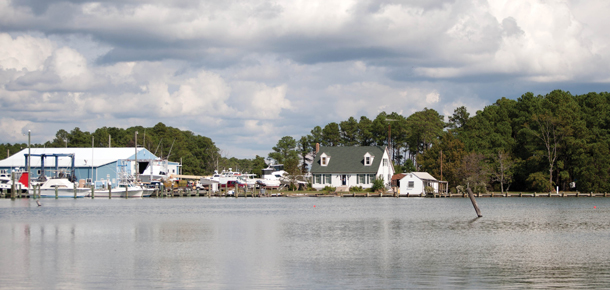Knauss legislative fellowships in Congress help build careers — and they're fun and educational. See our video and fact sheet for details.
Coastal Climate Resilience

The state of Maryland has over 3,000 miles of coastline along its bays, beaches, islands, and tidal rivers. Marylanders have relied on close cultural and economic connections to the coast for centuries. Today, more than 4 million people, comprising over 70 percent of the state’s population, reside in Maryland’s coastal zone and continue this tradition of living, working, and recreating on the coast.
However, due to the impacts of a changing climate, Maryland’s coastal region, which includes 16 counties and Baltimore City, is now facing a variety of challenges that threaten human safety, property, and natural ecosystems. In particular, rising sea levels, changing precipitation patterns, and warming air and ocean temperatures are all presenting significant issues for Maryland’s coast:
- Rising sea levels
Marylanders living in coastal areas are experiencing the effects of sea level rise, as the frequency of nuisance flooding increases and coastal land is lost to erosion, inundation, and marsh migration. The pace at which sea level rises is increasing over time and the impacts on coastal communities will continue to worsen.
- Changing precipitation patterns
Scientists predict that rain events will be more intense in the future, which will lead to flooding if stormwater management systems are overwhelmed. In addition, runoff from heavy downpours can lower the salinity of the bays and push nutrients and pollutants into rivers and streams.
- Warming air and ocean temperatures
On land, even more extreme heat events are expected in the future, which can pose a major risk to human health. Oceanographers and atmospheric scientists also predict that increases in ocean temperatures will support more intense storms, which could lead to greater damage from winds and storm surge when they reach the land.
What Extension Can Do For You
We are working to help coastal residents, decision-makers, and resource managers in Maryland address these climate-related challenges. Our efforts include:
Coastal Communities and Climate Change
Maryland Sea Grant Extension specialists partner with local governments, state and federal agencies, non-governmental organizations, academic institutions, and residents to support local efforts for improving coastal climate resilience. We work with coastal communities to help them understand the effects of climate change and sea level rise and prepare for climate-related hazards. We also assist communities with identifying areas of vulnerability and incorporating climate adaptation into their planning efforts. Through workshops, surveys, and town-hall meetings, we share information about coastal resilience work to facilitate partnerships and collaborations among interested parties throughout the region.
Find out more about our efforts to support climate adaptation in coastal communities.
The Chesapeake Bay Sentinel Site Cooperative
The Chesapeake Bay Sentinel Site Cooperative (CBSSC) is one of the five sentinel site cooperatives within the national NOAA Sentinel Site Program (SSP). The CBSSC offers resources for coastal community planners, natural resource managers, and other stakeholders to understand and more effectively plan for the impacts of rising sea levels and inundation. It is made up of federal, state, and local partners as well as eight “sentinel sites” located around the Chesapeake and coastal bays.
The CBSSC uses its network of sentinel site researchers to measure the impacts of sea level rise in the Bay region. At each sentinel site, researchers conduct intensive studies and sustained observation to detect and understand changes in coastal ecosystems. Monitoring data collection include: water levels, surface elevation tables, vegetation sampling, water quality, and meteorological data. The CBSSC is particularly interested in the effect of sea level rise on tidal wetlands and the ecological processes which cause marshes to persist, shift, or decline in the face of higher water levels. This research can help inform relative sea level rise predictions and associated ecological impacts, which have management implications. For instance, which marshes should be protected, which would benefit from restoration, and what land might become good marsh in the future?
Maryland Sea Grant hosts the CBSSC’s coordinator, who works with each of the sentinel sites to improve integration of research and outreach across the Chesapeake and coastal bays. The coordinator works to make the latest research on sea level impacts accessible to stakeholders and helps bring stakeholders together to discuss the science and its implications for land use.
Learn more about the sentinel sites, our collection of monitoring data, and marsh resiliency.






